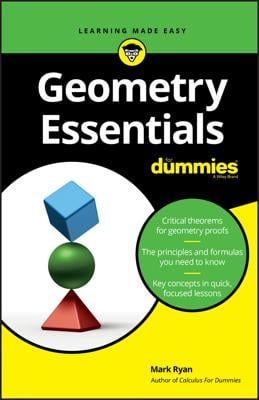![]()
Note that it’s the shape of half a square, cut along the square’s diagonal, and that it’s also an isosceles triangle (both legs have the same length). The following figure shows an example of a 45°- 45°- 90° triangle.

Try a couple of problems. Find the lengths of the unknown sides in triangles BAT and BOY shown in the following figure.

You can solve 45°- 45°- 90° triangle problems in two ways: the formal book method and the street-smart method. Try ’em both and take your pick.
Using the formal book method
The formal method uses the ratio of the sides from the first figure.![]()
For triangle BAT, because one of the legs is 8, the x in the ratio is 8. Plugging 8 into the three x’s gives you
![]()
And for triangle BOY, the hypotenuse is 10, so you set the
![]()
from the ratio equal to 10 and solve for x:

That does it:
![]()
Using the street-smart method
Now for the street-smart method for working with the 45°- 45°- 90° triangle (this method is based on the same math as the formal method, but it involves fewer steps). Remember the 45°- 45°- 90° triangle as the “root two triangle.” Using that tidbit, do one of the following:
Look back at the lengths of the sides in triangle BAT and triangle BOY. In triangle BAT, the hypotenuse is the only side that contains a radical. In triangle BOY, the hypotenuse is the only side without a radical. These two cases are by far the most common ones, but in unusual cases, all three sides may contain a radical symbol.






